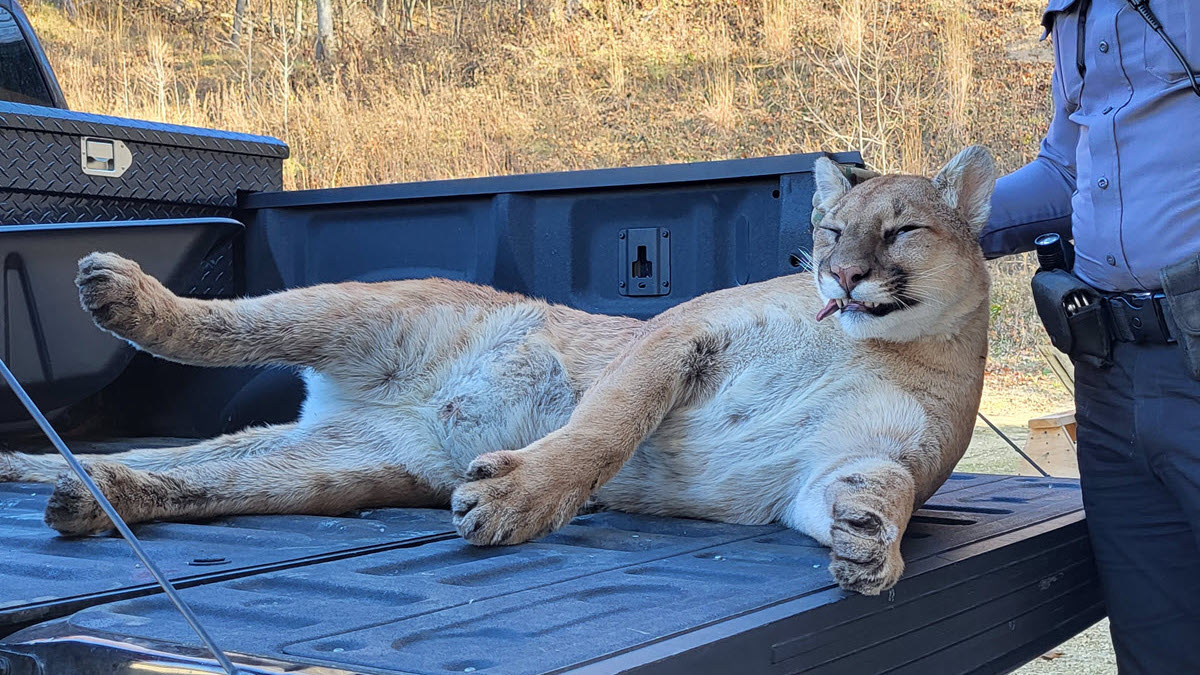
Editor's note: this article has been updated with information from the cougar's necropsy.
Benjamin Karasch of Eau Claire, Wisconsin, is the bowhunter who killed a mountain lion on Nov. 11 in Buffalo County after it spotted him atop his ladder stand and stalked to within 13 yards.
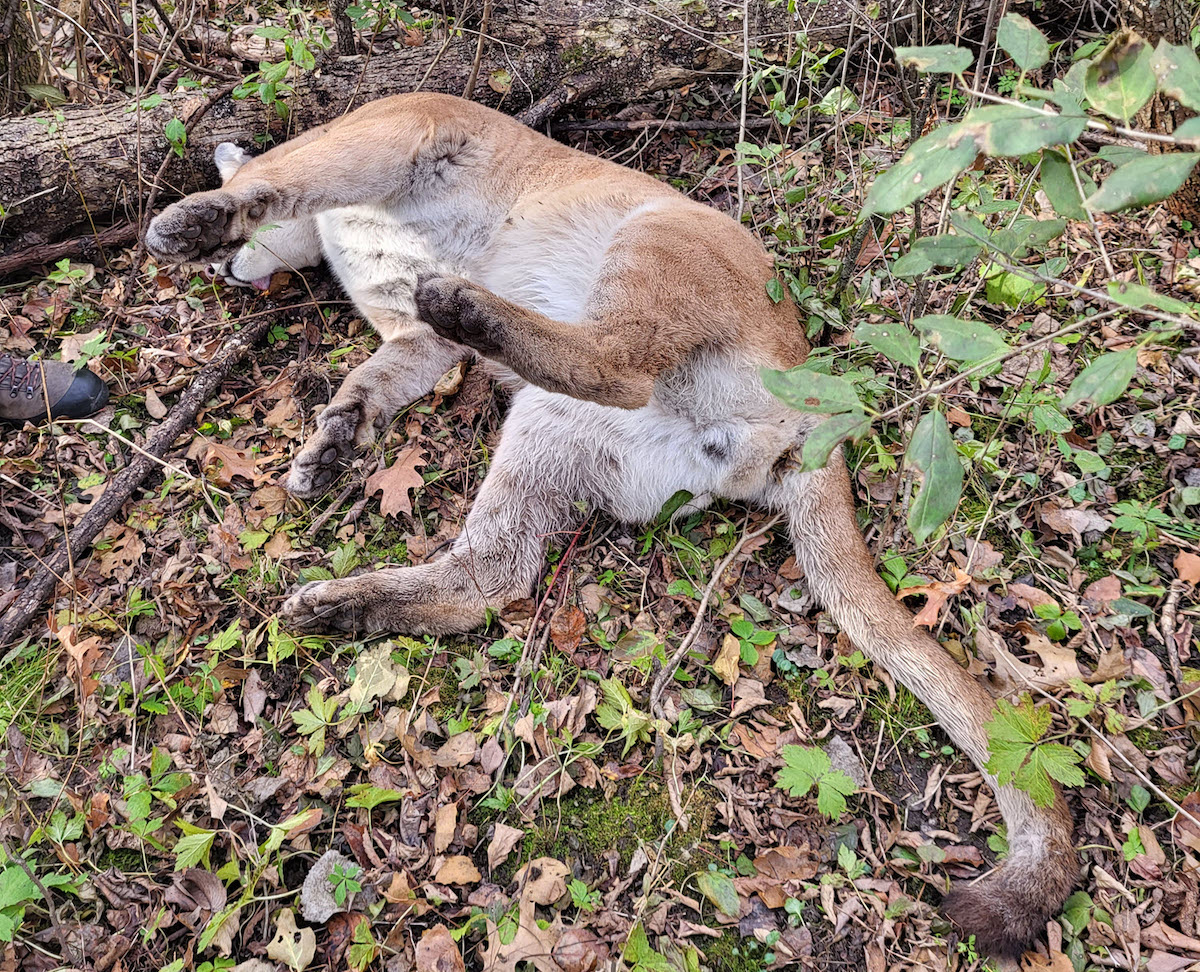
Fearing the cougar was about to attack, Karasch, 39, arrowed it. Wisconsin’s last documented cougar kill was 1908, 115 years ago. Wisconsin lists cougars as a protected species but allows people to defend themselves or protect their property if they fear the animal is about to cause harm.
Wisconsin has documented young male cougars from Western states occasionally passing through for weeks or months while seeking mates. It has yet to document a female cougar and, therefore, does not have a breeding population of cougars.
Minnesota, too, has not documented female cougars in modern times. Iowa’s Department of Natural Resources (DNR) also hasn’t found evidence of a breeding cougar population. It has, however, documented three female cougars, two in 2017 and one in February this year. Iowa does not protect cougars, and all three were killed.
The Iowa DNR reported the female cougars weighed 80, 88, and 116 pounds. Male cougars weigh 115 to 160 pounds, and the transient males documented in Wisconsin are usually 1- and 2-year-olds. The Buffalo County cougar was 2 years old and weighed 128 pounds. The Wisconsin DNR has documented 85 cougar sightings in the past five years, including 25 this year, most of which are trail-camera photos.
Those are the basic facts about midwestern cougars and the Nov. 11 incident. And yet that’s all the information many folks needed to leap online or atop a barstool and call Karasch a reckless, ego-driven “trophy hunting” killer who should be heavily fined and publicly scorned. They didn’t care that the DNR’s law-enforcement bureau and Buffalo County’s district attorney found no reason to cite or prosecute him.

Maybe it’s a sign of our advanced civilization that we no longer drag people from their homes and lynch, stone, or torch them without an adjudicated trial. Instead, we pass judgment from our home office or kitchen table and torture the presumed guilty on Internet forums and social media sites.
Sitting in our home vacuum chambers, we decide game wardens and district attorneys—all highly trained professional law-enforcement officials—are gullible pushovers who know less about the deed than sleuths like us, armed as we are with smartphones, electronic tablets, and half-baked assumptions.
Try telling that to DNR conservation wardens Robert Jumbeck and Nate Ackerman, who did the on-scene investigation along with DNR wildlife biologist Mark Rasmussen. The trio interviewed Karasch after arriving at his family’s land in Buffalo County the next morning, Nov. 12. After the interview, they followed Karasch to the site, tracked the wounded cougar’s blood trail, gathered evidence, and later reviewed it with the DA.

That process allowed them to listen to Karasch, study his eyes, watch his body language, ask questions, listen for inconsistencies, ask follow-up questions, and assess his overall demeanor. After evaluating the dead cougar and examining the arrow wound, the wardens verified what Karasch previously described and found him credible: His fear of attack was genuine.
We can assume the wardens previously checked Karasch’s court records for past hunting and fishing violations and verified his clean record. In contrast, how many folks from the e-mob even knew Karasch’s name, age, or hometown before keelhauling him online and among their friends?
Here are a few details the wardens put in their report for case number 23-C301-003-ARJ, as well as information from an article written by Dave Zeug, a retired DNR game warden. Zeug is the only media member Karasch spoke to. Karasch apologetically declined interview requests for this column, saying he was “just exhausted.”
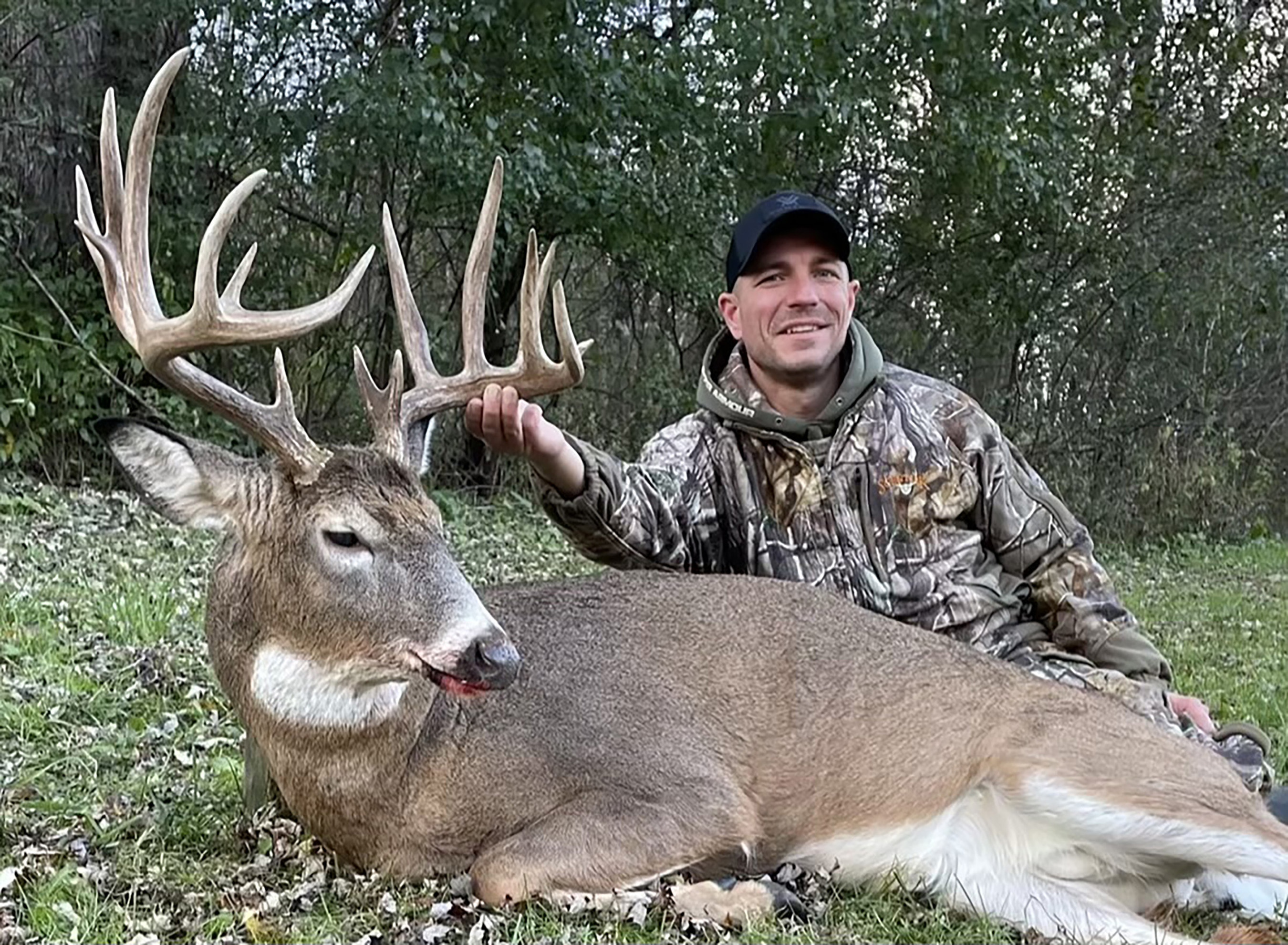
Karasch was bowhunting lands where he’d arrowed impressive whitetails before, and had placed a buck decoy at 40 yards. He thinks the cougar checked the decoy but focused on him after seeing him move 16 feet up his ladder stand.
After spotting the cougar at about 3:45 p.m., Karasch tried all the standard advice for scaring off large predators. He stood and faced the cat to show he was bigger than what it probably first perceived. Instead of fleeing, the cat crouched, twitched its tail, and started stalking him, pausing at times to hide before creeping closer.
When Karasch first stood, the metal carabiner on his safety harness clanged against his ladder stand. The cat wasn’t fazed. He then waved his hands and yelled repeatedly, “Hey! Get out of here!” According to “expert advice,” cougars typically stalk quiet, unsuspecting quarry from ambush and flee when realizing it’s a human.
Karasch’s amazement turned to doubts and then fright as the cat cut the distance. As it neared 15 yards, he feared the cat could cover the remaining distance and race up the tree faster than he could ever react. After all, he was only 16 feet high, and archery gear isn’t effective for close-quarters defense or attacks from below.
And so Karasch raised his bow, pulled the arrow to full draw, and aimed at the cat’s shoulder. When it crossed the line where Karasch thought he had no other choice, he released his arrow.
The cougar spun and raced off, fatally wounded. Karasch didn’t track it. Daylight was fading. He climbed down, left the woods, reported the incident to the DNR’s hotline, and went home.
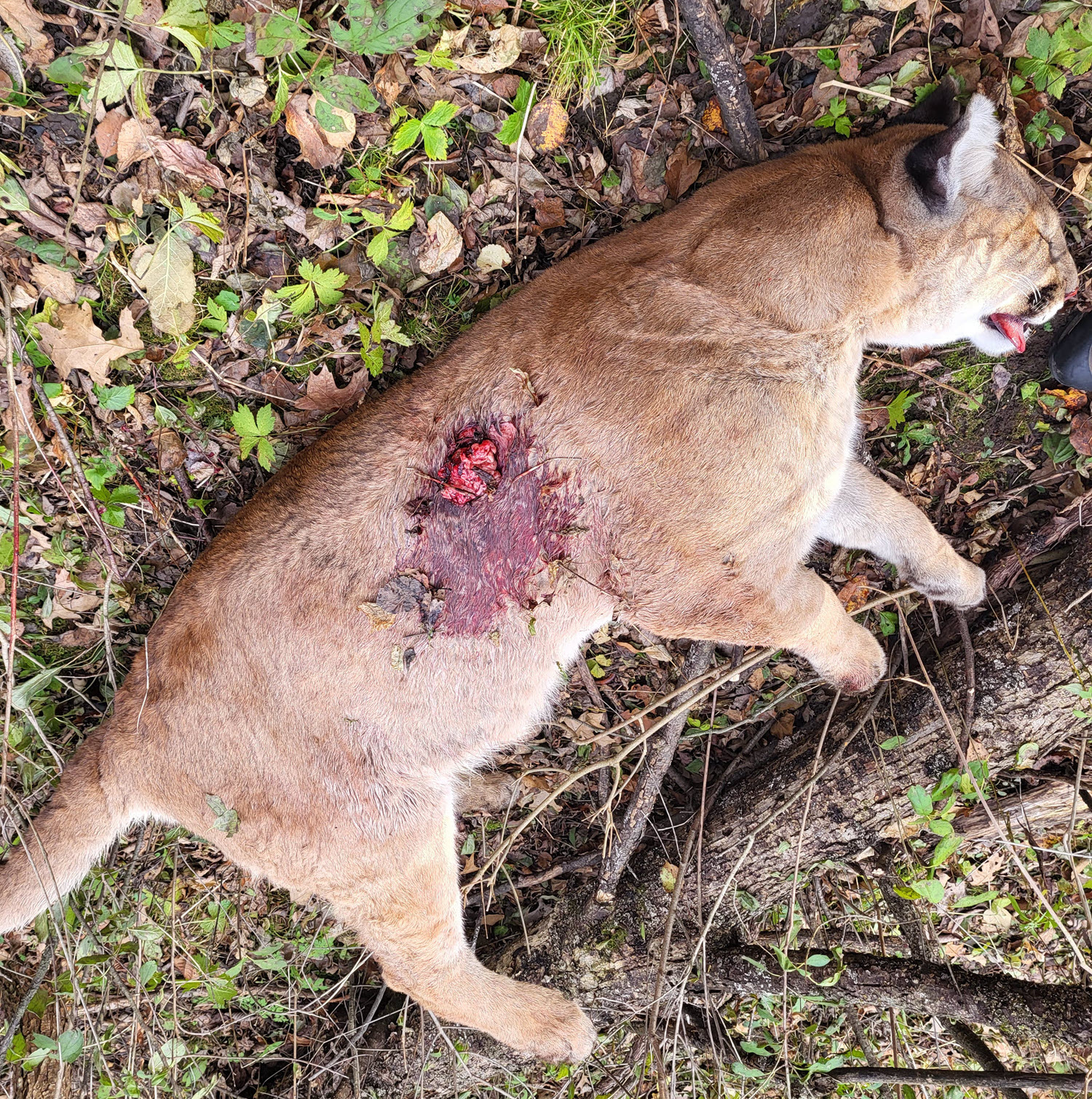
After meeting the DNR team the next morning and answering their questions, Karasch and the wardens tracked the cougar about 150 yards to where it died. The arrow wound matched Karasch’s description: The cat had been quartering toward him. The arrow struck at a steep angle atop its right front shoulder and penetrated rearward, lodging in the cougar’s stomach.
The wardens and their supervisor, Lt. Tyler Strelow in La Crosse, agreed Karasch didn’t violate any law by shooting the mountain lion. Zeug, too, vouched for Karasch, which means something. Zeug worked three decades as a game warden and knows how to assess credibility through questioning.
Strelow said Karasch never asked if he could keep the cougar’s carcass. In fact, he told the wardens he wished he had never seen it. The DNR took possession of the carcass to conduct a necropsy to assess its condition, stomach contents, parasite loads, and possible diseases.
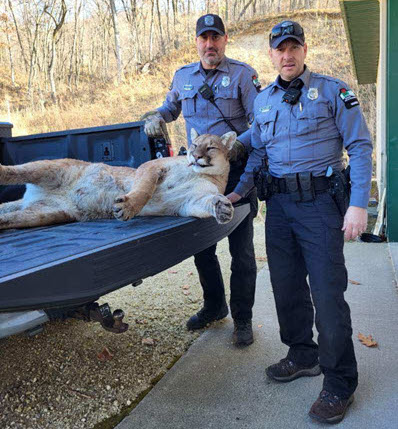
The necropsy on the cougar killed found the cat was healthy, well fed, and carrying good fat reserves, according to the state’s large-carnivore specialist.
“It had eaten within the past day and knew how to make a living,” said Randy Johnson of the Department of Natural Resources. Johnson said the Nov. 30 necropsy on the 128-pound male cougar was led by state wildlife veterinarian Lindsey Long. Johnson said the necropsy found no internal or external cysts or parasites, and no indications of disease or injuries. He also said the cougar had all of its toes, and showed no frostbite scars on its ears or tail-tip.
When laid out and measured from nose to tail-tip, the cougar stretched 6 feet, 9 inches, Johnson said. Its stomach was at least half-full, containing about 3 pounds of deer tissues and bone fragments. “Road-kills are common in Wisconsin, and we have no way of knowing whether it killed the deer or was scavenging it,” Johnson said.
The necropsy team extracted two teeth from the cougar for laboratory analysis and aging. DNR biologists estimate the cat was 2 years old and think it dispersed from South Dakota’s Black Hills. Genetic tests on scat and hair samples left by previous cougars in Wisconsin have all traced to the Black Hills, Johnson said. None were domestically raised. The DNR expects the laboratory tests will take weeks to pinpoint the cougar’s age and origins.
Johnson said the necropsy confirmed the cougar died from the arrow wound, which matched the description Karasch told DNR investigators. Karasch arrowed the cougar after it stalked within 13 yards of his ladder stand near dusk Nov. 11. His arrow, tipped with a 2-blade Rage Trypan broadhead, entered atop the cougar’s right shoulder, passed through the lungs, diaphragm, and stomach, and stopped beneath the hide below.
“The only bones it penetrated were the ribs,” Johnson said. “It probably passed through 2 to 3 feet of tissue, and didn’t exit the body.”
Johnson said the DNR removed the cougar’s pelt and skull, and sent both to a taxidermist to create a mount for public display and educational programs. The University of Wisconsin’s Zoological Museum in Madison kept the rest of the skeleton.
Strelow is confident the DNR and Buffalo County DA acted correctly.
“Some people will Monday-morning quarterback the situation, but we followed our procedures, agreed on a resolution, and we stand behind it,” Strelow said. “The man feared for his safety, acted reasonably, and reported what he had done. If he had tried to cover things up, the outcome probably would have been different.”
Images via Wisconsin DNR.





Conversation